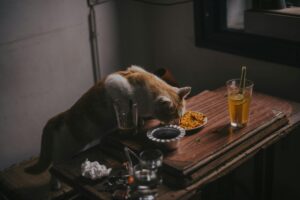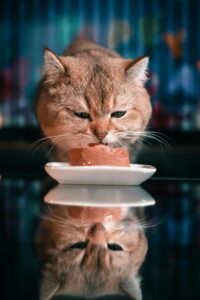Unlocking the Secrets of Cat Food Labels: A Detailed Guide for Responsible Pet Owners
Understanding how to read cat food labels may seem trivial at first, but it is an essential skill for ensuring your cherished feline receives the nutritional balance necessary for optimum health. These labels present vital information that extends beyond simple packaging text; they act as a comprehensive guide to the quality and composition of your cat's diet. By educating yourself about these labels, you will be empowered to make informed choices that significantly enhance your cat's overall health, vitality, and longevity.
A critical element of cat food labels is the specific terminology employed. Phrases like “complete and balanced” indicate that the product meets the nutritional standards set forth by the Association of American Feed Control Officials (AAFCO). By understanding these terms, you equip yourself to choose foods that provide the essential nutrients necessary for your cat's well-being. This awareness empowers you to make decisions that cater to your cat’s individual dietary needs and health requirements.
While examining cat food packaging, you will often come across terms such as ‘natural’ or ‘organic’. Although these labels may seem appealing to consumers, they have distinct definitions and implications regarding quality. ‘Natural’ generally signifies that the food is free from artificial flavors and colors, yet it does not ensure overall nutritional quality. In contrast, ‘organic’ pertains to specific farming practices that often lead to a higher standard of safety and quality, making it a more favorable choice for health-conscious pet owners seeking the best for their furry friends.
The AAFCO plays a pivotal role in establishing nutritional guidelines within the pet food industry. Their standards guarantee that products labeled as ‘complete and balanced’ fulfill specific nutritional requirements tailored to various life stages of cats. Grasping the significance of these labels is crucial for pet owners aiming to make informed choices about their cat's diet and health. By leveraging this knowledge, you can confidently select optimal options that cater to your cat's unique dietary needs.
Having a clear understanding of what is included on your cat’s food label can greatly enhance your ability to make nutritious choices that support their health and well-being. The insights you gather will enable you to select high-quality food options that align with your cat's dietary requirements, ensuring they live a happy and healthy life.
 Understanding Cat Food Ingredients: Key Insights for Informed Choices
Understanding Cat Food Ingredients: Key Insights for Informed Choices
A fundamental part of interpreting cat food labels involves carefully analyzing the ingredients list. Ingredients are typically listed in order of weight before cooking, meaning that the first few entries highlight the food's primary components. This hierarchy is essential, as it provides valuable insights into what your cat is consuming on a daily basis, shaping their health and overall vitality.
Cats are obligate carnivores, making it vital for protein sources to dominate the ingredient list. Look for specific protein sources such as chicken, beef, or salmon listed at the top, rather than vague terms like ‘meat meal’. This specificity not only indicates a higher quality diet but also aligns with your cat's natural dietary preferences and nutritional needs, promoting their overall health.
Additionally, it is crucial to identify and limit certain additives and fillers in your cat's food. Ingredients like corn, soy, or wheat gluten may increase the food's volume but offer minimal nutritional benefits for felines. Instead, prioritize options that include whole grains and vegetables, which can serve as healthier alternatives and contribute to a more balanced diet that supports your cat’s well-being.
Be vigilant about artificial preservatives commonly found in pet foods, such as BHA, BHT, and ethoxyquin. Although these substances are often utilized to extend shelf life, they may not be the healthiest options for your furry friend. Instead, choose foods that employ natural preservatives like vitamin E (tocopherols) or vitamin C (ascorbyl palmitate) to ensure a quality diet for your cat.
If you come across unfamiliar or lengthy ingredient names, take the initiative to investigate them. Being knowledgeable about what goes into your cat's food is the best strategy for making informed choices that support their overall health and happiness.
Evaluating Nutritional Content: Achieving the Ideal Nutritional Balance for Your Cat
Understanding the Guaranteed Analysis section on cat food labels is essential for gaining insights into the nutrient composition of the food. This section typically outlines the minimum or maximum percentages of crude protein, fat, fibre, and moisture. Achieving the correct balance of these nutrients is crucial for maintaining your cat’s overall health and well-being.
The protein content should be a primary consideration when choosing cat food. Cats require high levels of protein to thrive, making it vital to ensure that adequate amounts come from animal sources, which supply the essential amino acids they need for optimal functioning. Avoid foods that rely heavily on plant-based proteins, as these often lack the complete range of nutrients necessary for your cat's health.
Carbohydrate content also plays a significant role in your cat's diet. While some carbohydrates can be beneficial in moderation, they should not dominate the ingredient list, especially for cats that may be prone to weight gain. Seek foods that prioritize higher protein and lower carbohydrate levels to support a healthy and balanced diet tailored to your cat's unique needs.
Essential nutrients, such as taurine, are paramount to your cat's health. Taurine is crucial for maintaining heart and eye health, and since cats cannot synthesize it independently, it is vital to ensure that your chosen food includes this essential component. Always check the label to confirm that taurine is present in the food you select.
Be vigilant about potential allergic reactions in cats that may stem from specific food ingredients or imbalances in their diet. Common allergens can differ among cats, so it is essential to observe your pet closely for any adverse reactions. If necessary, consider exploring hypoallergenic food options designed for sensitive cats to ensure their well-being.
 Crucial Tips for Choosing the Best Cat Food to Enhance Your Cat's Health
Crucial Tips for Choosing the Best Cat Food to Enhance Your Cat's Health
Selecting the right food for your cat involves more than simply picking the product with the most attractive packaging. It is about aligning the nutrition with your cat’s individual needs and lifestyle. When making your selection, consider essential factors such as your cat's age, activity level, and any specific health conditions they may have that could influence their dietary requirements.
Customizing the diet to match your cat’s lifestyle can significantly affect their health and vitality. For instance, an active outdoor cat will likely need more calories and protein compared to a more sedentary indoor cat. Understanding their daily activities can guide you in providing a diet that meets their specific energy needs, ensuring they remain healthy and active.
Keep in mind that price does not always equate to quality; therefore, avoid being swayed by cost alone. Sometimes, you may end up paying a premium for branding rather than actual nutritional benefits. Understanding the significance of the ingredients and nutritional content is far more crucial than the price tag when it comes to your cat's health.
Be aware that pet food brands frequently adjust their recipes, sometimes subtly and other times significantly. Staying informed about these changes ensures that you are always conscious of what is being served in your cat's bowl. Regularly checking for updates from brands can help you avoid unforeseen dietary changes that may impact your cat's health.
Lastly, consulting with your veterinarian can provide personalized insights tailored to your cat's specific health needs. A veterinarian can recommend appropriate food options that address dietary restrictions or health concerns, giving you peace of mind that your cat is receiving optimal nutrition for a happy and healthy life.
The Article : How To Interpret Your Cat’s Food Labels Appeared First On Unity Pets.
The Article Interpreting Cat Food Labels: A Quick Guide Was Found On https://limitsofstrategy.com





No responses yet